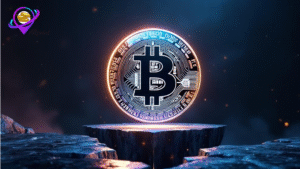LINK Stuck in a Tight Range as Whales Keep Buying
Chainlink’s LINK has been bouncing between $12 and $15 for what feels like forever. There’s no real momentum either way—just this weird standoff where big players keep scooping up tokens while smaller traders seem to have checked out.
On-chain data shows whales are pulling around 100,000 LINK off exchanges every week. That’s enough to soak up selling pressure without really moving the needle price-wise. It’s almost like they’re fine with keeping things quiet while they accumulate.
But here’s the thing: retail activity is practically flat. Daily active addresses have been stuck between 28,000 and 32,000, and transactions aren’t budging from roughly 9,000 per day. Even when Chainlink’s oracle usage picked up late last year, smaller traders didn’t really jump in.
Why This Feels Familiar
The whole situation reminds me a bit of Bitcoin in 2023—just grinding sideways before finally breaking out. Whale withdrawals hit a high of 3,000 transactions per day late last year, and they’re still elevated. Exchange reserves have dropped about 40% since January, which tells you someone’s serious about stacking up LINK.
But without retail joining in, or whales easing off, it’s hard to see how this deadlock ends. Maybe something shifts soon—or maybe we’re in for more of the same.
Meanwhile, Chainlink’s Making Moves Elsewhere
While LINK’s price does its thing, Chainlink’s been busy with partnerships that could matter long-term. Last month, they teamed up with Mastercard to let cardholders buy crypto directly on-chain using regular money. That’s a big deal for accessibility, especially with companies like Zerohash and Swapper Finance handling the messy parts like compliance and liquidity.
Then there’s the Visa pilot under Hong Kong’s e-HKD+ program. They tested moving money across borders using stablecoins and CBDCs—specifically, converting ANZ’s AUD-backed stablecoin into e-HKD to invest in a tokenized fund. Chainlink’s CCIP made it possible to shift assets between ANZ’s private blockchain and Ethereum’s testnet, while Visa’s tech handled the token stuff.
The result? Settlements that usually take days happened in seconds, even on a weekend. That’s the kind of thing that could actually change how money moves.
For now, though, LINK’s price is still stuck in its little box. Whether that changes soon probably depends on whether retail decides to wake up—or if the whales finally run out of patience.






